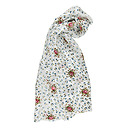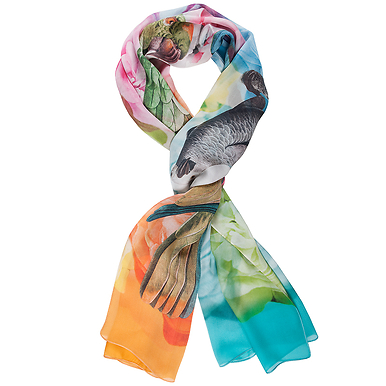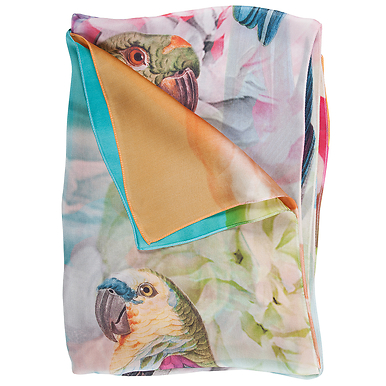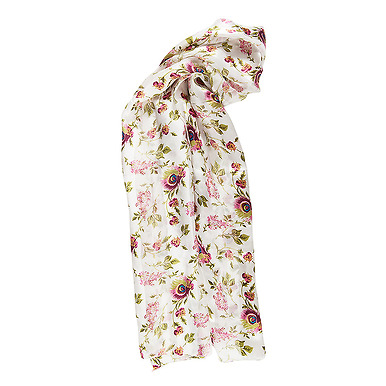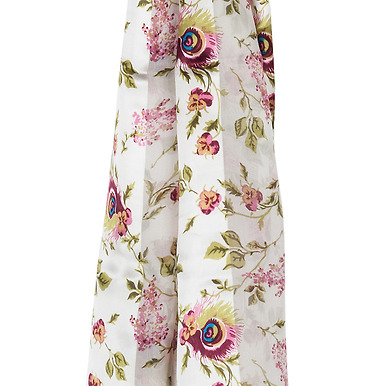Roses and cornflowers Stole
CH100409
Marie Antoinette (1755-1793)
The cornflower is a modest flower that grows wild in meadows. It seems to have appeared in decorative patterns as of 1772. It was highly appreciated by the Queen who made bouquets of this country flower in her retreat at the Hamlet of the Petit Trianon.
The big porcelain...
Read more
Marie Antoinette (1755-1793)
The cornflower is a modest flower that grows wild in meadows. It seems to have appeared in decorative patterns as of 1772. It was highly appreciated by the Queen who made bouquets of this country flower in her retreat at the Hamlet of the Petit Trianon.
The big porcelain Manufactories of Sevres and Meissen adopted this motif and arranged it in a highly codified pattern: small flowering branches are scattered evenly, with bouquets of roses, the emblematic flower of Marie-Antoinette, arranged harmoniously among the patterns of cornflowers.
The success was instantaneous and this motif, initially reserved for porcelain, was subsequently used to decorate furnishing fabrics.
Flat-frame printing, also known as "Impression à la Lyonnaise", is a traditional technique that involves passing flat frames (stencils) successively over the fabric, which is then glued on long heating tables. The speed of this process means printing
"In other words, when one color is printed, the previous one is already dry. This makes it possible to print designs of great complexity and finesse. This technique, invented in the 19th century, is now rare in France, with only a few well-known brands still using it.
Flat-frame printing, also known as "Impression à la Lyonnaise", is a traditional technique that involves passing flat frames (stencils) successively over the fabric, which is then glued on long heating tables. The speed of this process means printing
"In other words, when one color is printed, the previous one is already dry. This makes it possible to print designs of great complexity and finesse. This technique, invented in the 19th century, is now rare in France, with only a few well-known brands still using it.
Close
Login to see prices
Sold by GrandPalaisRmn


